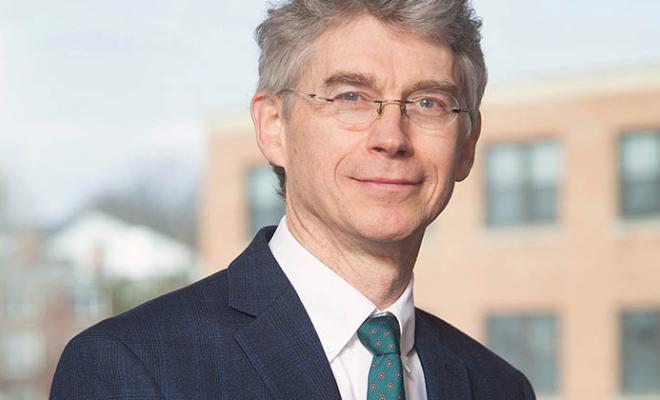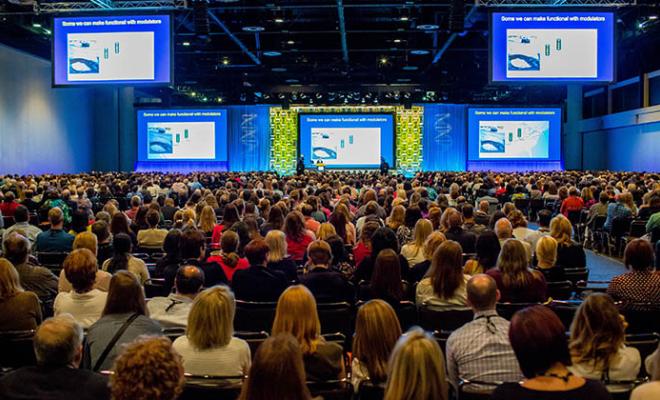Cystic Fibrosis Foundation Therapeutics Inc. (CFFT), the nonprofit drug development affiliate of the Cystic Fibrosis Foundation, announced that it will award up to $5 million to Editas Medicine to use the latest gene editing approach and try to apply it to CF.
I sat down with William Skach, M.D., senior vice president of research affairs at the CF Foundation, to discuss the challenges and potential rewards of gene editing for cystic fibrosis. Here are excerpts from that interview.
SS: Hi, Bill. Welcome to the blog. First, can we talk about what gene editing is?
WS: Gene editing is a way to change genetic information in a particular segment of someone's DNA. Editing makes it possible to correct mutations and turn specific genes on or off. That's a generic way to think about it. It works like a tiny pair of scissors that home in on a particular region of DNA. By cutting the DNA at a very precise location, it allows the cell to repair the damage in several different ways.
SS: And when you're sending those scissors into the cells, you want to make sure they're going to the right place?
WS: Yes. Currently, there is always the possibility that unintended consequences might occur, and that's a big challenge in the gene editing field right now. The wrong cut could knock out a gene that is very important or, alternatively, activate a gene that could predispose someone to cancer. Achieving a high level of accuracy and efficiency is one of the major challenges that needs to be overcome in order to develop gene editing into a therapy.
We need to target the editing enzymes to the precise site in a person's DNA and the right cell type. This will generally require testing hundreds or thousands of possible sequences to find the one or two that are most specific and efficient at correcting an individual mutation. Some testing can be done by computers, but a good deal of trial and error is still needed in most cases.
SS: What do you mean by “the right cell type”?
WS: In the lung there are many different kinds of cells. Cells live for different periods of time, so corrections to certain cell types might last anywhere from weeks to several months. But if it is possible to repair a type of stem cell -- also called a tissue progenitor cell -- which regenerates the lung airway as it divides, then it should be possible to achieve permanent repair.
The ultimate goal is to repair the correct cells that have long-term or even permanent effects on the disease, so that once a therapy is given, the corrected cells will continue to maintain the health of the lung for the person's entire life.
SS: Right now, what are we able to do? Do we know how to target stem cells?
WS: That's a great question. One of the real challenges in the lung stem cell field is to identify the critical cell for editing and understand how that cell population works to repair and maintain healthy airways in the lung. Unfortunately, there is no universal agreement on what the actual lung stem cell really is. The biology of airways in the human lung is just not well understood. So one of our first goals is to discover which cell population is the critical population to target for permanent repair.
SS: How important is it to combine stem cell biology, gene editing and gene delivery?
WS: In order to be successful in developing a true cure for CF, we need to bring gene editing, gene delivery and the stem cell disciplines together with the CF community so that we can discover how to efficiently deliver the optimal mixture of gene editing enzymes to the right cell in the right location of the lung and ultimately other tissues. To begin to accomplish this goal, the CF Foundation is sponsoring a conference in Savannah, Ga., this summer to enable scientists in all of these areas to begin building the collaborations needed to find a cure for CF.
SS: What are we asking Editas to do with this award?
WS: We are supporting Editas in an effort to use their CRISPR-Cas9 technology to target highly specific areas of the CFTR gene and to develop gene editing tools that could eventually move into clinical trials.
SS: What is CRISPR-Cas9 technology?
WS: It is important to realize that there are several different techniques to edit genes and each has its advantages and challenges. CRISPR-Cas9 is a new technique that is very effective at modifying genes and generally easier to use than some other editing approaches. For this reason, we are very excited to work with Editas to develop and apply this strategy to repair the CFTR gene.
SS: What are the odds of success?
WS: Developing gene editing therapies is clearly a long-term proposition, and there is much to learn before we can safely treat patients. The first step is to develop ways to edit the CFTR gene to restore the normal sequence. We then need to apply that knowledge to clinical therapies.
Right now, we are at the first stage of this process. However, the extraordinarily rapid advancements we have seen in just the past few years make me very optimistic that if we begin now, we will ultimately achieve our goals.





